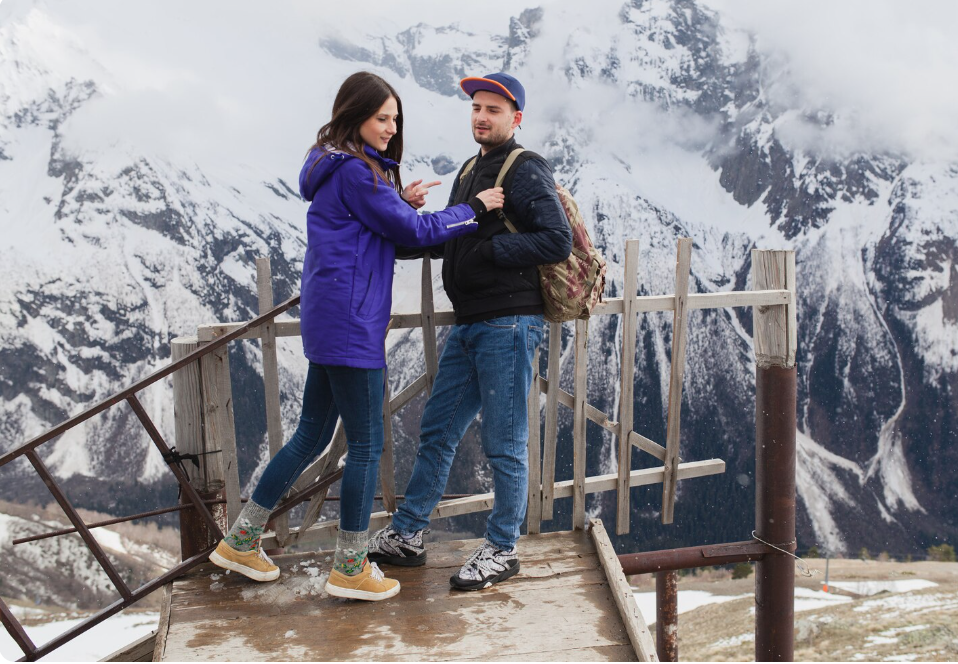The Annapurna Base Camp trek is a sacred journey deep inside the Himalayas, where you will be offered grand views of an immense mountain theater in the heart of Annapurna. No doubt there is an inescapable pull to the big mountains, but greater still are the experiences and wonders in store out in the surrounding wilds. Protection of this natural beauty is a two-way avenue. It’s critically important to adopt a Leave No Trace mentality while hiking alongside the Nepal Annapurna Base Camp Trek so that this one-time adventure does not adversely affect our fragile mountain environment. This all-inclusive, eco-friendly practices guide has gathered all the aspects you need to consider for an eco-friendly ABC Trek.
Looking ahead: A fantastic way to kick off your responsible trek to Annapurna Base Camp
The journey to no trace begins long before your boots tread the trail. Caution lowers your impact — a key commitment to the sustainability of controlling the Annapurna Base Camp Trek Difficulty Level.
Carry In, Carry Out: There are not many opportunities to make a rubbish drop if you are hiking above the villages of the ABC Trek. Rethink your takeout. Repack your food before you leave the house, skip wrappers, boxes, and plastic. Bring a heavy-duty trash bag, one you might be able to hang as a dry sack off the stern of your kayak, and pack out all your nonbiodegradable refuse: plastic bottles, batteries, candy wrappers, and used wet wipes. Even apple cores or tea bags — the sort that decompose at sea level but might survive for months, even years in the cold, dry air of high-altitude mountains were bagged up and carried away.
Ditch the Single-Use Plastic: This is probably the single most important thing you can do. Clean up. Using plastic water bottles is a blight. Instead, carry your own refillable water bottle or hydration bladder and treat water with purification tablets, a filter, or by boiling at teahouses. Whatever few cents the boiled water costs is nothing compared with the health of this planet. It’s worth mentioning as well that the Annapurna Conservation Area Project (ACAP) recommends refill stations, and by donating to them, you’ll be helping combat a lot of what you see as trash on your way to Annapurna Base Camp.
Trave and Camp on Durable Ground: Save The ABC Trail
You are on several times on trails of the Annapurna base camp trek map that takes you through several landscapes from terraced fields and forests to mountain meadows. It is quite literally the first step (or two) to minimizing your environmental impact.
Stay on the Path: Travel one behind the other along a well-marked path. Plants across the muddy regions are destroyed, and the tough roots are uncovered, resulting in excessive soil loss, especially on the slopes. Don’t cut switchbacks (trails that zigzag up the mountain) due to the fact that they velocity erosion and the trail for future hikers.
Responsible Waste Management and the Complications
Haul Everything Off: Again, nothing that isn’t Dal Bhat should have the right to leave the mountains. This includes small things like cigarette butts, foil from blister packs, and most importantly, human solid waste (If you are not at a teahouse facility).
Human waste disposal. Dodo goes to the toilets where the teahouses are. If you’re in the wilderness, well off the trails, campgrounds, and water sources for at least 200 feet, dig a small hole (6-8 inches deep), have your movement,t ad then cover with all of the original soil as well as some camouflage from nature.
Water and cleaning: some biodegradable soap in small amounts, and by no means wash (something) inside 200 feet of water! Strain the dirty dishwasher and disperse of strained water so it filters through the soil before returning to the watershed. Do not wash directly in a move or a lake.
The splendor of the dramatic Annapurna vicinity
Do no longer disturb natural gadgets: Do no longer take ‘souvenirs’ consisting of rocks, fossils, or plant life.’) The whole thing in nature serves the atmosphere. Plucking the flora prevents seeding, and the turning over of rocks destroys micro-niches wherein bugs and small creatures make their homes.
Keep in mind of Cultural and ancient sites. Respect therapy walls, temples. Don’t fiddle with religious monuments. Or you can keep honoring the sanctity within these places, which are not souvenirs. Just don’t carve your initials in a tree, paint rocks, or make dumb stone towers (cairns)—it’s graffiti and it can confuse real trail markers.
Leave No Trace: How Campfires Affect Nature And Respect For Wildlife
Campfires may be e sentimental part of the mountain experience, but they are driving deforestation and environmental destruction.
Opt for Options besides Firewood: As a result of severe deforestation in the mid-hills of Nepal, Teahouses have replaced firewood with gas or kerosene for cooking. Being a responsible trekker on the Annapurna Base Camp Trek Tour, you should promote these methods by requesting meals cooked on gas or dining in teahouses that are powered by renewable energy. Do not burn firewood for your personal campfire, and don’t encourage teahouse keepers to use firewood.
Thoughtful and Resourceful of Others
What I dislike about the well-known Trek to Annapurna Base Camp is The popularity of the Trek to Annapurna Base Camp also means that you will be hiking along with a ton of other people. It is also part of leaving no trace: respecting the experience of other trekkers and people who live there.
Control Noise: The mountains are quiet. Keep noise levels low. You should be listening with earbuds, not portable speakers. Keep quiet, especially around villages or camps, a nd let others also enjoy the tranquility of the Himalayas.
Resource Preservation: Water and power are in short supply, especially at higher elevations. Be miserly with the lights when you charge your devices, conservative with water for washing. That little act of theirs honors the limited resources in which they, the local villagers, become your ho, st ait’sits a measure to make sure that the total Annapurna Base Camp trek cost stays sustainable.
Closing Time: Your Annapurna Base Camp Trek, the Legacy
Every track in the Annapurna region is a metamorphosis for its trekkers. You can be a responsible traveler on the stunning Annapurna Sanctuary trek. By following these ‘Leave No Trace’ principles – from cutting out plastic on your ABC Trekking to supporting eco-friendly local ways of doing things – you’re working to keep trails free from garbage, jungles full of life, and panoramic views untarnished for years to come. Choose to be a guardian of the Himalayas, your kind gestures today will guarantee that tomorrow is going to have an Annapurna Base Camp Trek as virgin and natural. The mountains are there, but they’re counting on your respect.

